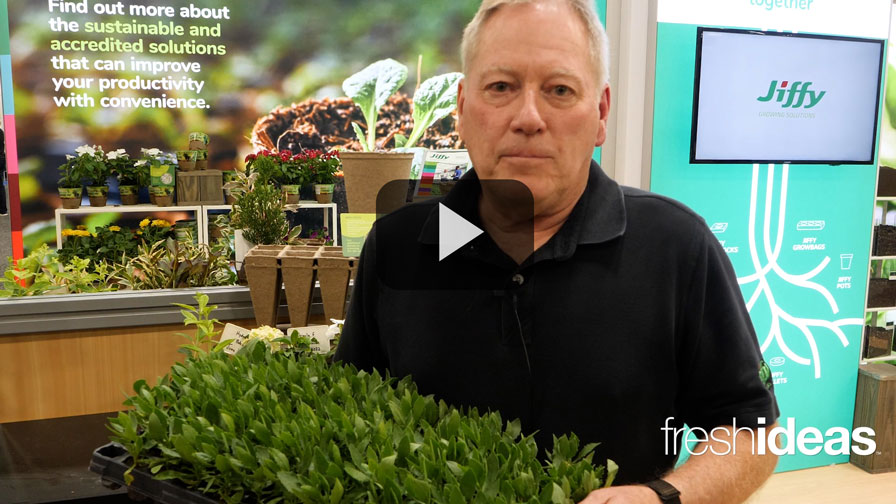Terra Nova Nurseries Introduces New Heuchera And Sedum Cultivars

Terra Nova Nurseries announced today two new 2013 “Sneak Peek” introductions are now available to growers: Heuchera ‘Midnight Ruffles’ from their Ruffles series and Sedum ‘Rosetta.’ Both are available for growers to order in liner and/or plug form and are two of several new cultivars the company will be introducing this year.
Heuchera ‘Midnight Ruffles’ is the newest addition to Terra Nova Nurseries’ Heuchera Ruffles series; Heuchera ‘Lime Ruffles’ was released to growers in March. The company specifically added more H. villosa breeding in combination with H. micrantha to create a variety darker than ‘Chocolate Ruffles’ and with larger leaves. It grows vigorously in the garden and has large, red-brown to almost-black ruffled leaves. It is a foliage plant that thrives in several U.S. regions because of its excellent heat and humidity tolerance as well as cold tolerance. The average size of this cultivar is 14 inches (18 inches in flower) tall, and 8 inches wide. It grows well in zones 4 to 9.
Sedum ‘Rosetta’ has blue-green leaves that open like icy-blue roses on new growth in the spring. Its leaves stay on their upright arching stems all summer, with white flower clusters that form on the ends of each branch in late summer. Compared to ‘Hab Grey’, ‘Rosetta’ is more upright, has smaller leaves and shorter internodes. This cultivar is great for edging and works well in mass, mixed beds and borders. The average size of this variety is 30 inches tall and 16 inches wide. It grows best in zones 4 to 10.
Terra Nova Nurseries has created Plant Profile pages and Grower Recipes specific to these new varieties so growers interested in possible liner orders can learn about growing habits, plant characteristics, fertilization recommendations, water requirements, and other insights provided by the breeding team. These documents can be obtained by contacting Terra Nova Nurseries’ sales team at [email protected].










